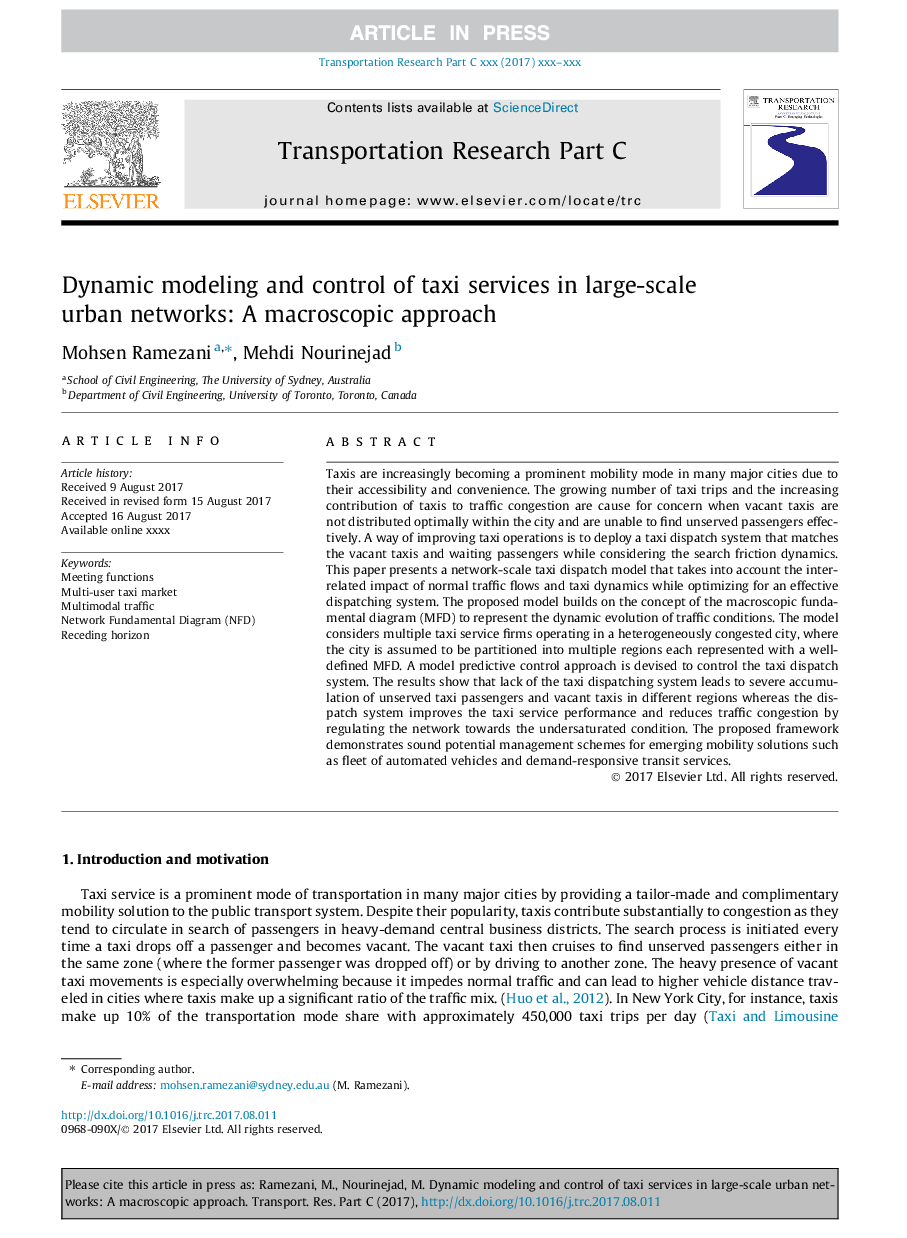| Article ID | Journal | Published Year | Pages | File Type |
|---|---|---|---|---|
| 8947477 | Transportation Research Part C: Emerging Technologies | 2018 | 17 Pages |
Abstract
Taxis are increasingly becoming a prominent mobility mode in many major cities due to their accessibility and convenience. The growing number of taxi trips and the increasing contribution of taxis to traffic congestion are cause for concern when vacant taxis are not distributed optimally within the city and are unable to find unserved passengers effectively. A way of improving taxi operations is to deploy a taxi dispatch system that matches the vacant taxis and waiting passengers while considering the search friction dynamics. This paper presents a network-scale taxi dispatch model that takes into account the interrelated impact of normal traffic flows and taxi dynamics while optimizing for an effective dispatching system. The proposed model builds on the concept of the macroscopic fundamental diagram (MFD) to represent the dynamic evolution of traffic conditions. The model considers multiple taxi service firms operating in a heterogeneously congested city, where the city is assumed to be partitioned into multiple regions each represented with a well-defined MFD. A model predictive control approach is devised to control the taxi dispatch system. The results show that lack of the taxi dispatching system leads to severe accumulation of unserved taxi passengers and vacant taxis in different regions whereas the dispatch system improves the taxi service performance and reduces traffic congestion by regulating the network towards the undersaturated condition. The proposed framework demonstrates sound potential management schemes for emerging mobility solutions such as fleet of automated vehicles and demand-responsive transit services.
Keywords
Related Topics
Physical Sciences and Engineering
Computer Science
Computer Science Applications
Authors
Mohsen Ramezani, Mehdi Nourinejad,
